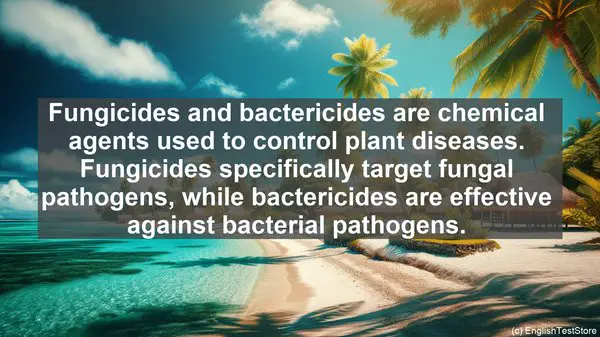Introduction
Welcome to today’s lesson on the top 10 commonly confused words in plant pathology. As students, it’s crucial to have a clear understanding of these terms to excel in this field. So, let’s dive right in!
1. Disease vs. Disorder
Often used interchangeably, ‘disease’ and ‘disorder’ have distinct meanings in plant pathology. A disease is caused by a pathogen, such as a virus or fungus, while a disorder refers to an abnormality in the plant’s structure or function, not necessarily caused by a pathogen.
2. Symptom vs. Sign
Symptoms and signs are both indicators of a plant’s health, but they differ in their nature. A symptom is a visible effect of a disease on the plant, such as wilting or yellowing leaves. On the other hand, a sign is the direct evidence of a pathogen, like the presence of fungal spores.
3. Endemic vs. Epidemic
These terms describe the prevalence of a disease. Endemic refers to a disease that is consistently present in a particular area or population, while an epidemic is the sudden increase in the number of cases of a disease, often spreading across a larger region.
4. Inoculation vs. Infection
Inoculation and infection are stages in the disease cycle. Inoculation is the introduction of a pathogen to a plant, while infection is the establishment and growth of the pathogen within the plant, leading to disease development.
5. Resistant vs. Tolerant
When it comes to plant defenses, resistance and tolerance are two key terms. A resistant plant can prevent the pathogen from causing disease, while a tolerant plant can endure the disease’s effects without significant damage.
6. Vector vs. Host
In the context of plant diseases, a vector is an organism, such as an insect or nematode, that transmits the pathogen from one plant to another. The host, on the other hand, is the plant species that the pathogen infects and reproduces in.
7. Fungicide vs. Bactericide
Fungicides and bactericides are chemical agents used to control plant diseases. Fungicides specifically target fungal pathogens, while bactericides are effective against bacterial pathogens.
8. Systemic vs. Contact
These terms describe the action of a pesticide. A systemic pesticide is absorbed by the plant and distributed throughout its tissues, providing long-lasting protection. In contrast, a contact pesticide remains on the plant’s surface, offering immediate but temporary control.

9. Necrosis vs. Chlorosis
Necrosis and chlorosis are both symptoms of plant diseases. Necrosis refers to the death of plant tissues, often resulting in dark, discolored areas. Chlorosis, on the other hand, is the yellowing of plant tissues, typically due to a lack of chlorophyll.

10. Pathogen vs. Saprophyte
Pathogens and saprophytes are two types of microorganisms. Pathogens cause diseases in plants, while saprophytes feed on dead organic matter, playing a crucial role in decomposition.
